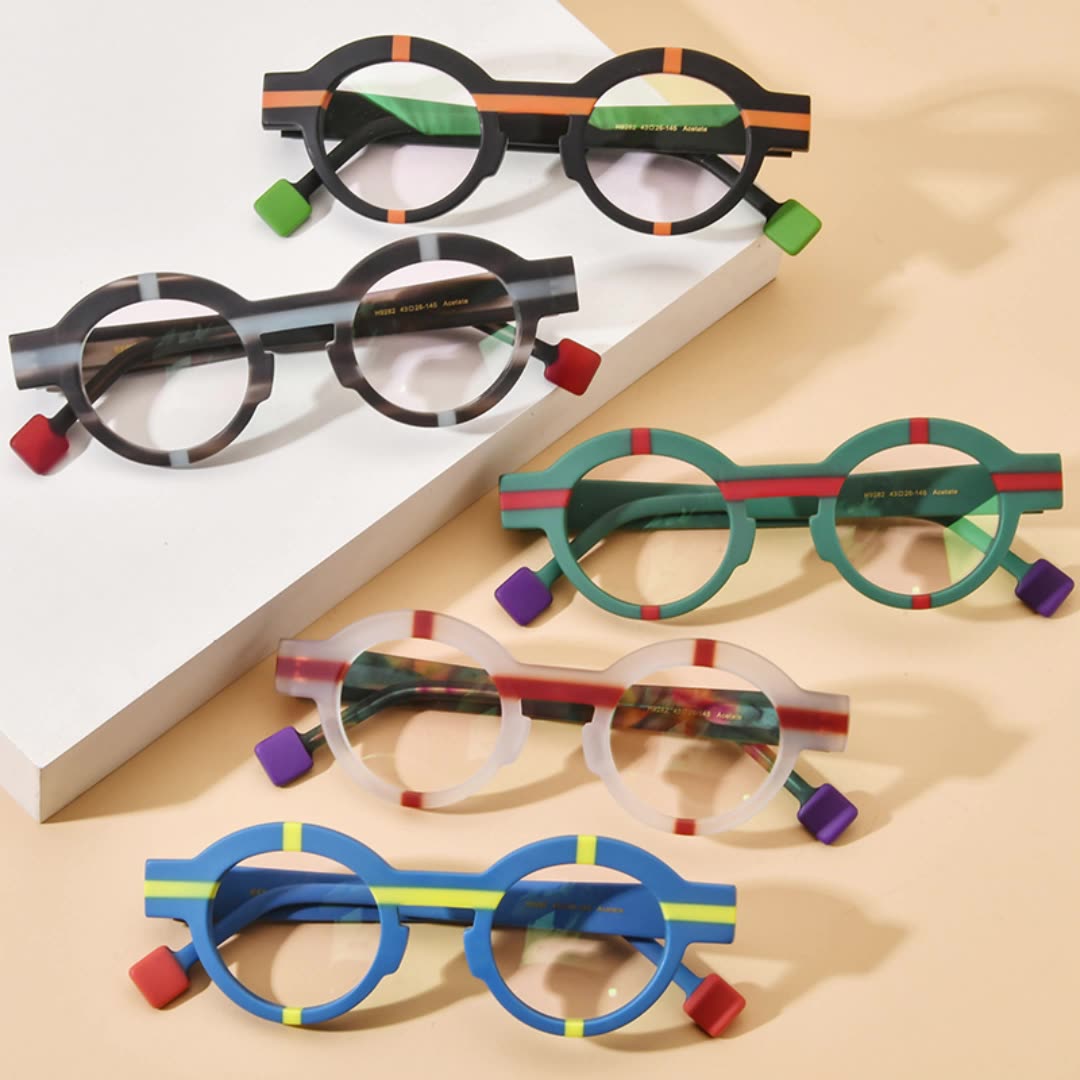Feel with the eye
Clarity: After wearing glasses, under the normal eye distance, such as looking at an eye chart at 5 meters or a book or computer screen at 30-40 centimeters, you should be able to clearly see the target content, without obvious blurring, ghosting or halo phenomenon. If the distant object is still fuzzy, it may be that the degree of myopia is not enough or the degree of far-sightedness is too high; If you see blurred near, it may be that the degree of myopia is too high or the degree of farsightedness is not enough.
Comfort: The right degree of glasses should be comfortable to wear, will not produce dizziness, eye distension, nausea and other uncomfortable symptoms. If the degree is not accurate, the eyes may need to over-adjust in order to see the object, which is easy to cause visual fatigue, resulting in the above discomfort symptoms.
Eye fatigue: After wearing glasses for normal eye activities, such as reading, working, watching TV, etc., for a period of time (generally 30 minutes to 1 hour), if the eyes do not appear obvious symptoms of acerbity, fatigue, pain, etc., it indicates that the glasses may be more appropriate. If you feel tired quickly, there may be a problem with the strength of your glasses.

Visual examination
Eye chart test: Using a standard eye chart to check, in general, wearing the right degree of glasses, corrected vision should be able to reach 1.0 and above. If the corrected vision is lower than this standard, the glasses may be inaccurate and need to be further adjusted.
Optometry: Go to a professional eye institution or optician for an optometry, which is the most accurate way to determine if the prescription of glasses is appropriate. The optometrist will conduct a comprehensive examination of the refractive status of the eye through comprehensive optometry and other equipment, including the degree of myopia, farsightedness, astigmatism and axial parameters, and compare it with the prescription of glasses to determine whether the degree matches.
Wearing state
See objects at different distances: After wearing glasses, observe the adjustment of the eyes when objects at different distances. Under normal circumstances, the eyes should be in a relatively relaxed state when looking at distant objects, and the eyes will adjust to a certain extent when looking at near objects, but it will not be too strenuous. If you feel tension in your eyes when looking at a distance, or need to over-adjust to see when looking close, the glasses may not be suitable.
Glasses wearing stability: Check whether the glasses are worn stable, no sliding, skew and other conditions. If the glasses are not positioned correctly, it may affect the line of sight, resulting in poor visual effects, and produce an illusion similar to the improper degree. At the same time, improper frames may also cause additional pressure on the eyes and affect comfort.
Daily activity performance
Walking and movement: When wearing glasses for daily activities such as walking and going up and down stairs, you should be able to clearly perceive the surrounding environment, there will be no significant delay or shaking of vision, and the body’s sense of balance will not be affected. If you feel abnormal vision during these activities, there may be a problem with the strength of the glasses.
Driving: For people who need to drive, wearing glasses should be able to clearly see road signs, vehicle dashboards, etc., the field of vision is clear and broad, there will be no visual dead corners or blurriness, otherwise the glasses may not be suitable.
If there are doubts about whether the prescription of glasses is appropriate, it is recommended to go to a professional eye institution or optical shop for examination and consultation in time, so as to obtain accurate judgment and advice.
Post time: Mar-07-2025